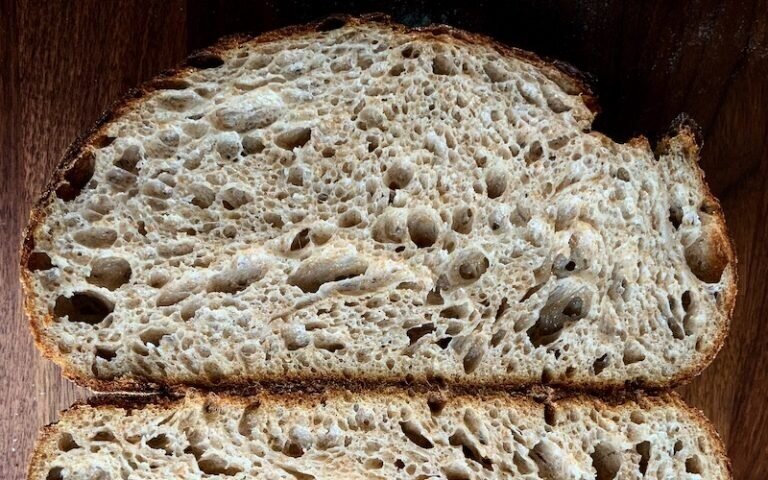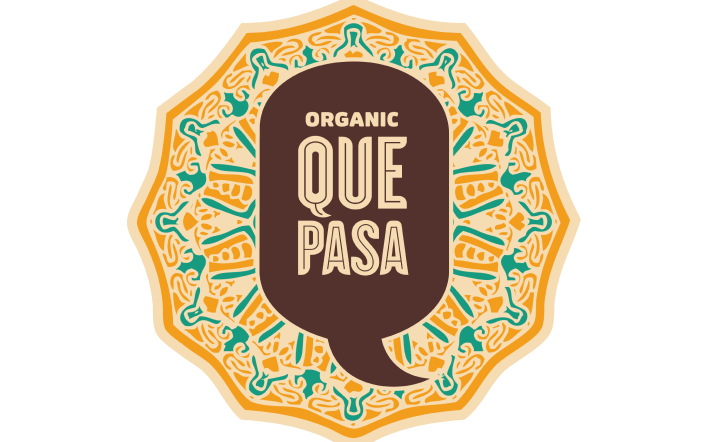
BUCKWHEAT SOURDOUGH
Tags:
Buckwheat has a very unique flavour and aroma and is a great addition to add depth to your baking. Unfortunately, buckwheat flour does not form gluten so baking with it can be a challenge. Scalding the buckwheat flour before adding it to the dough allows you to add a much higher percentage of buckwheat to the loaf while still getting a nice open crumb. This loaf is very moist and keeps well for many days.
BUCKWHEAT SOURDOUGH Recipe
Prep time:
8-12 hours Minutes
Cook time: 40 min Minutes
Servings:
2 Loaves
Ingredients
FOR THE LEVAIN:
- 130 g Anita’s All Purpose White Flour
- 130 g Water
- 15 g Mature sourdough culture
FOR THE BUCKWHEAT SCALD:
- 170 g Anita’s Wholegrain Buckwheat Flour
- 400 g Very hot water (170-180F)
FOR THE FINAL DOUGH:
- 335 g Anita’s All Purpose White Flour
- 200 g Anita’s Stone Ground Whole Wheat Flour
- 310 g Water (room temperature)
- 17 g Fine sea salt
Instructions
- Mix the levain ingredients and let stand at warm room temperature (23-24˚C) for 8-12 hours. Look for a 50% increase in volume. When ready, it should have a fruity tangy smell and taste. A younger levain will yield a more mild flavour in the final loaf and a longer fermented levain will result in a more sour loaf.
- Prepare the buckwheat scald by combining the buckwheat flour and hot water. Stir vigorously to prevent clumps from forming. It is important that the water is at least 170˚F in order to properly gelatinize the starch of the buckwheat. Let cool to room temperature.
- One hour before the final mix, combine the flour and water (no salt) of the final dough until fully incorporated with no dry bits left. Cover the dough and allow to rest for one hour.
- Add the levain and salt to the flour/water mixture and hand mix to incorporate.
- Use the ‘slap and fold’ technique to develop the gluten in the dough. 5-6 minutes. If you are unfamiliar with this technique refer to our sourdough guide on the website.
- Mix the scalded buckwheat in by hand thoroughly by squeezing it into the dough with your thumb and fingers and alternately pulling up the sides of the dough and pressing it back down into the center.
- Slap and fold the dough for another 2 minutes or until you have completely incorporated the buckwheat.
- Ferment for 4 hours at warm room temperature (23-24˚C) with three folds at 30, 60 and 90 minutes.
- Divide the dough into two 850 g pieces and preshape into a light ball.
- Bench rest for 20 minutes.
- Shape the loaf into either a Boule or Batard depending on the shape of your proofing basket, dust with rice flour and place into your proofing basket. A bowl lined with a tea towel will also work if you don’t have a proofing basket.
- Proof approximately 2 hours at warm room temperature until it has gained 50-75% volume. You can also proof for 1 hour and then retard in the fridge for 8-36 hours.
- Preheat the oven to 475˚F with a cast iron dutch oven inside for at least 45 minutes. Placing the dutch oven on top of a pizza stone will prevent the bottom from getting too dark. See the sourdough guide for other baking methods.
- Turn the dough out onto a piece of parchment, score and place in the preheated dutch oven with the lid on. Reduce the oven temperature to 450˚F. Remove the lid after 20 minutes and continue baking 10-20 minutes until deep brown. A fully cooked loaf will have an internal temperature of 210˚F.
- Cool the loaf fully before cutting (at least one hour). If the loaf is cut while it is still hot, it may end up with a gummy interior. This is especially important with this loaf due to its very high moisture content.
In This Recipe
About The Author
Anita's Organic Mill
Anita's Organic Mill is a Canadian based organic mill specializing in high quality always organic flours, grains and cereals. Anita's believes that baking has the power to disconnect us from the hustle, and reconnect us with one another.










